Unadon (Grilled Eel Rice Bowl) is a popular Japanese delicacy that you can easily make at home for lunch or dinner. This delicious unagi bowl features perfectly grilled eel fillets glazed with my homemade unagi sauce and nestled on a bed of hot steamed rice. The tantalizing aroma of the sweet caramelized glaze is enough to make your mouth water!
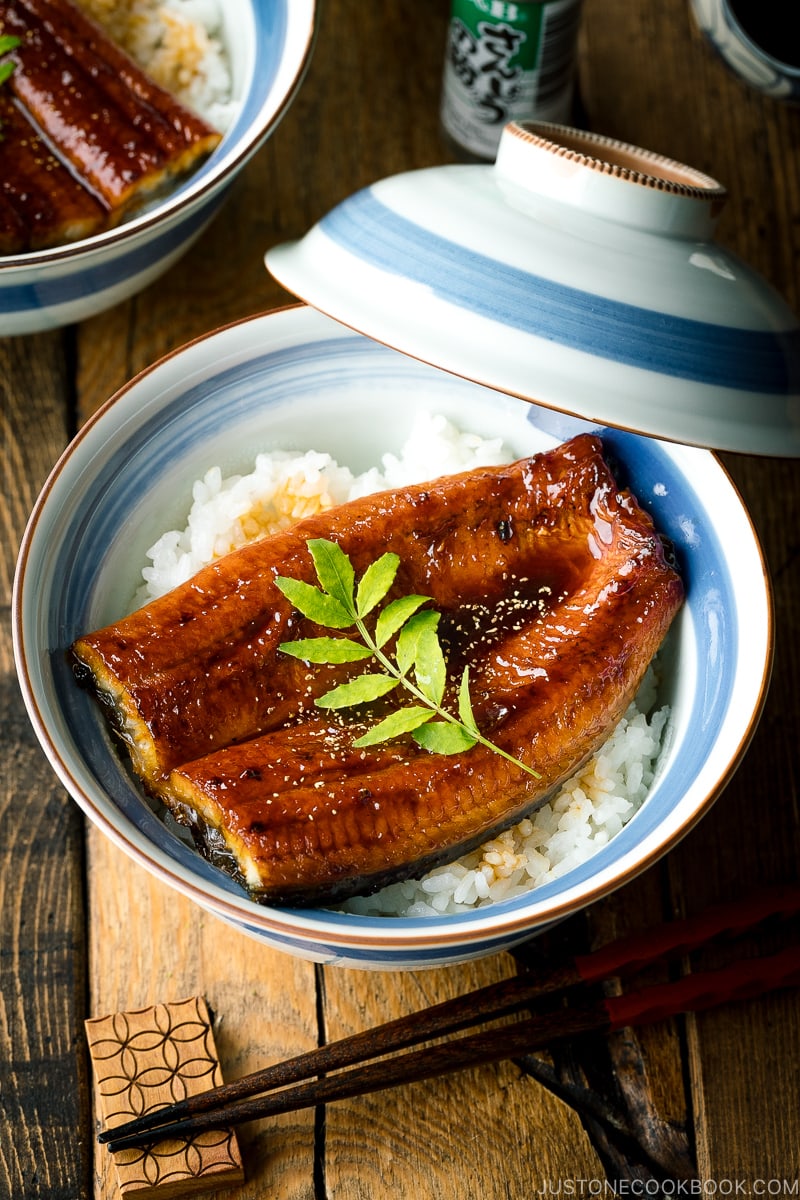
Unagi sushi is a mainstay item at most sushi restaurants, but have you tried unagi rice bowl before? This classic Japanese dish is called Unadon (鰻丼) or Unaju (鰻重), or you might have known it as eel rice.
The Japanese have a special affection for Unadon because the satisfaction of eating perfectly grilled unagi over a bed of warm rice is incomparable. Oh, and the aroma of the sweet caramelized sauce…that alone is enough to make my mouth water.
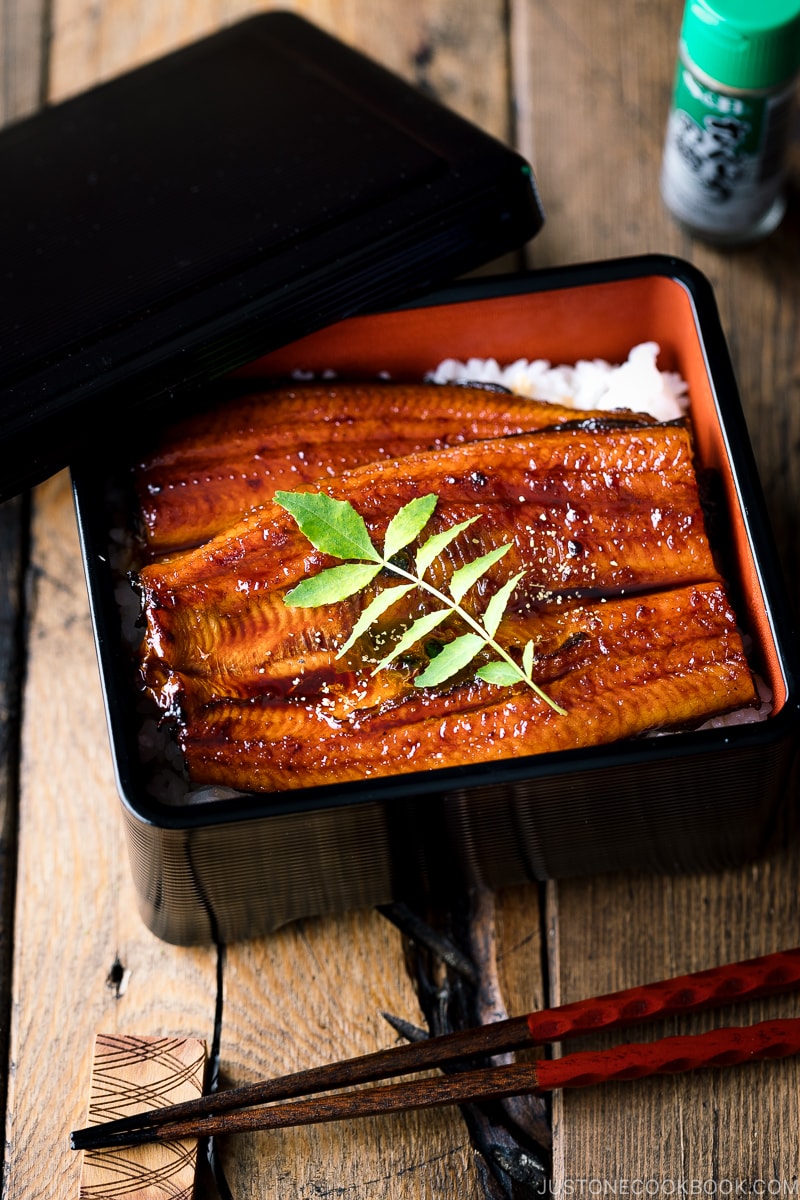
What is Unadon (Unaju)?
Unadon, or Grilled Eel Rice Bowl, is a beloved Japanese dish consisting of steamed rice topped with grilled eels glazed with a sweetened soy-based sauce (called tare) and caramelized, preferably over a charcoal fire.
When grilled unagi is served in a big rice bowl called donburi, we call it Unadon (鰻丼), a short for unagi donburi. When the unagi is served in a fancy rectangle lacquered box with the lid on, we call it Unaju (鰻重) because these boxes are called jubako (重箱).
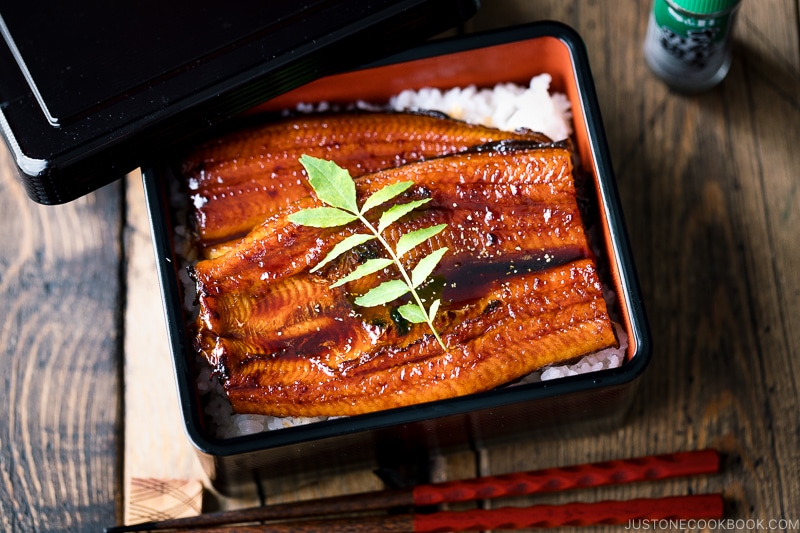
How Eels Are Cooked
This cooking method is known as Kabayaki (蒲焼), similar to Teriyaki. It’s a very common way to prepare eels and other fish in Japan.
This is how the unagi-specialized chefs prepare the eels. Live eels are split down the back (or belly), gutted and boned, butterflied, and cut into square fillets. Then, the fillets are skewered, dipped in a sweet soy-based sauce, and broiled on a charcoal grill.
In the Tokyo region, the skewered eel is first broiled without the sauce, and we call it Shirayaki (白焼き). Then the unagi is steamed before being dipped in the sauce and grilled again.
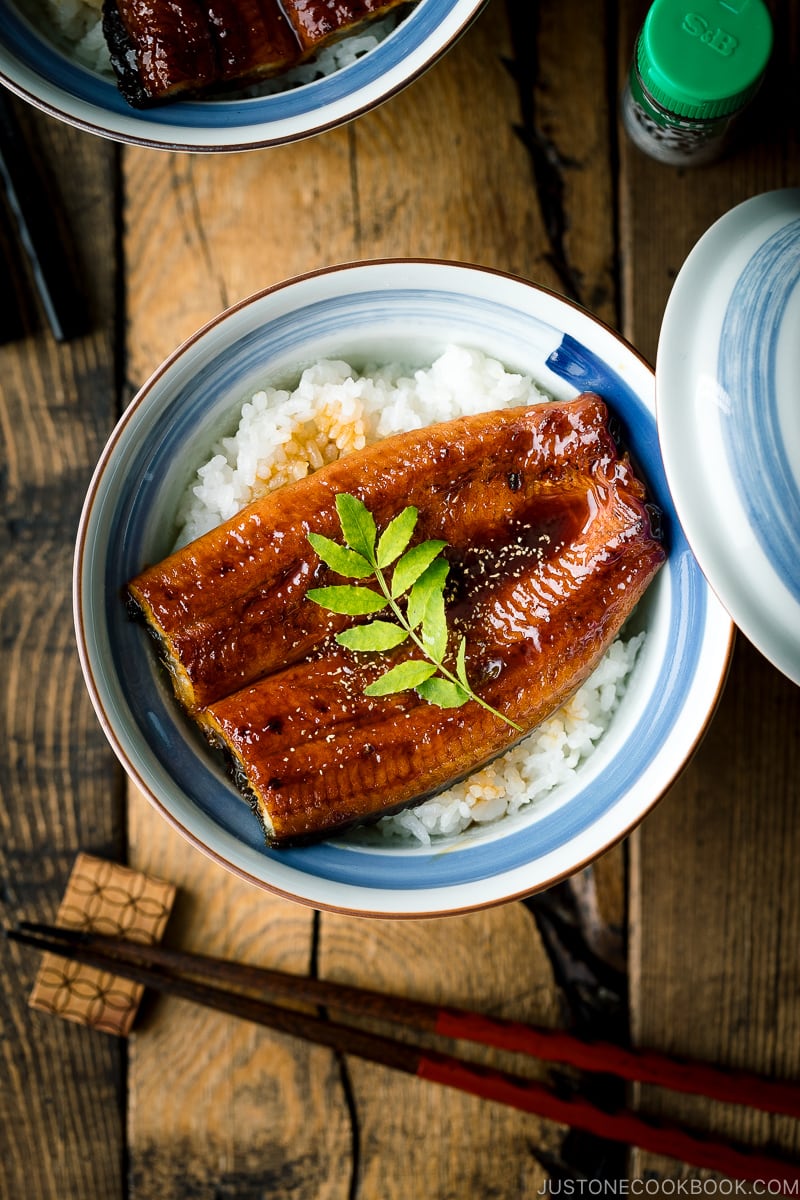
Dining at Unagi Restaurant in Japan
When you go to unagi specialized restaurants in Japan, the menu typically offers both Unadon and Unaju, and there are 3 ranks for the price whether you order Unadon or Unaju.
- The premium grade is called Tokujo (特上) or Matsu (松, pine)
- The superior grade is called Jo (上) or Take (竹, bamboo)
- The average grade is called Nami (並) or Ume (梅, plum)
According to the unagi restaurants, the price is usually related to the weight (amount) of unagi and not necessarily the quality.
Tradition: Eat Unagi on Mid-Summer Day
Unagi (freshwater eel) is considered an expensive delicacy in Japan, and it’s not an everyday dish. I did some quick research and found that 26.2% of people eat unagi “about once every 6 months,” followed by “once every 2 to 3 months” at 16.8%, “less than once a year” at 16.1%, and “once a year” at 15.8%.
So when do most people eat unagi? You will see big banners and carts of eel packages in the supermarkets right before the mid-summer day.
From the Edo Period (1600-1850), we have a tradition of eating unagi on a particular mid-summer day called doyō-no ushi-no-hi (土用の丑の日) to gain stamina to beat the heat.
- In 2024, it falls on July 24th and August 5th.
- In 2025, it falls on July 19th and July 31st.
Rich in vitamins A and E and Omega-3 fatty acids, the great nutritious benefits of eel are another reason why Japanese people enjoy eating unagi.
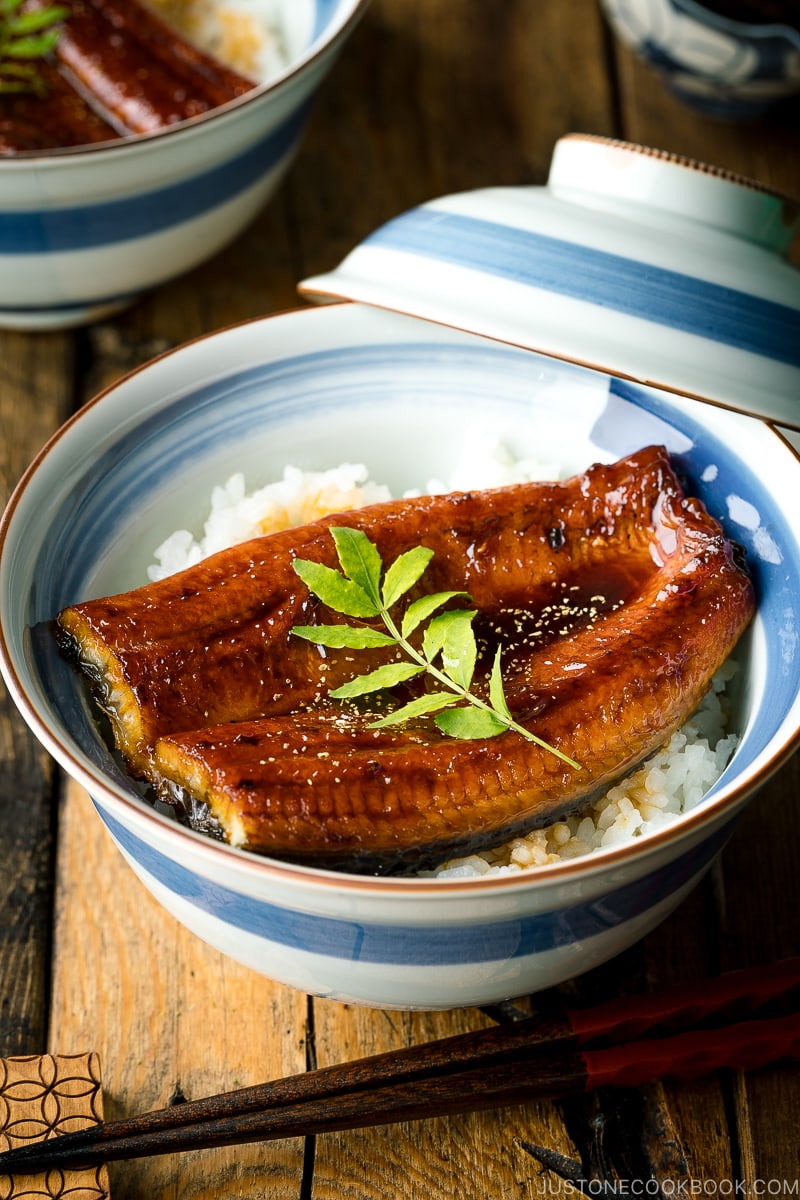
Ingredients You’ll Need
- Unagi (Eel) fillets
- Unagi sauce – you can get a bottle of eel sauce but it’s SO easy to make it at home (I’ll show you!)
- Steamed rice
Japanese home cooks don’t buy a live eel to cook at home. They buy pre-grilled eel fillets and just reheat them before serving. Here in the US, you can purchase grilled eels that have been vacuum-sealed in Japanese/Asian grocery stores or this online shop.
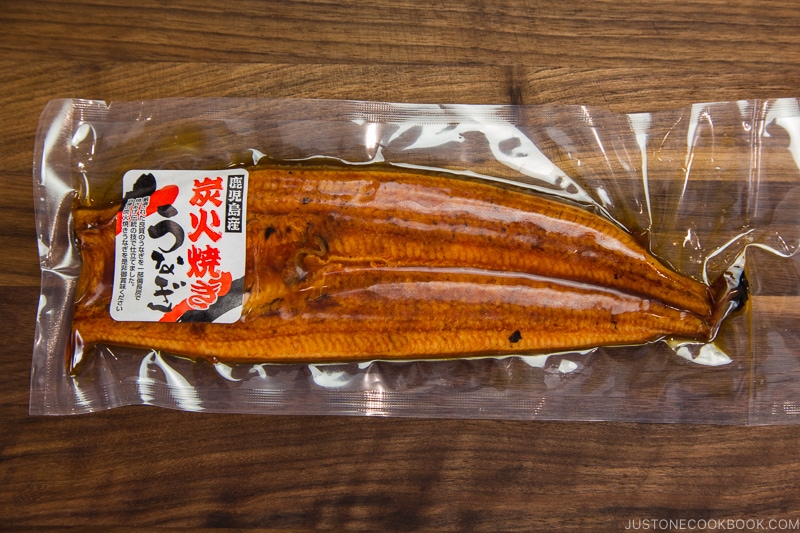
My local Japanese supermarkets sell imported unagi from Japan (all from Kagoshima prefecture) and they usually cost between $30-40 each (compared to the frozen eels from other countries, which cost around $10 each). If you are able to find Japanese unagi in your local market, you are in for a real treat!
How to Make Grilled Eel Rice Bowl at Home
- Prepare the homemade eel sauce (see below).
- Broil eel fillets and brush the eel sauce right before taking them out.
- Serve rice in a large rice bowl (donburi), brush with sauce, and serve eel fillets on top.
How To Make Homemade Eel Sauce (Unagi no Tare)
Today I will share how to prepare Unadon with my homemade eel sauce (unagi sauce). You can buy a bottle of unagi sauce at a Japanese/Asian market, but you can easily make it at home. All you need is soy sauce, mirin, sake, and sugar!
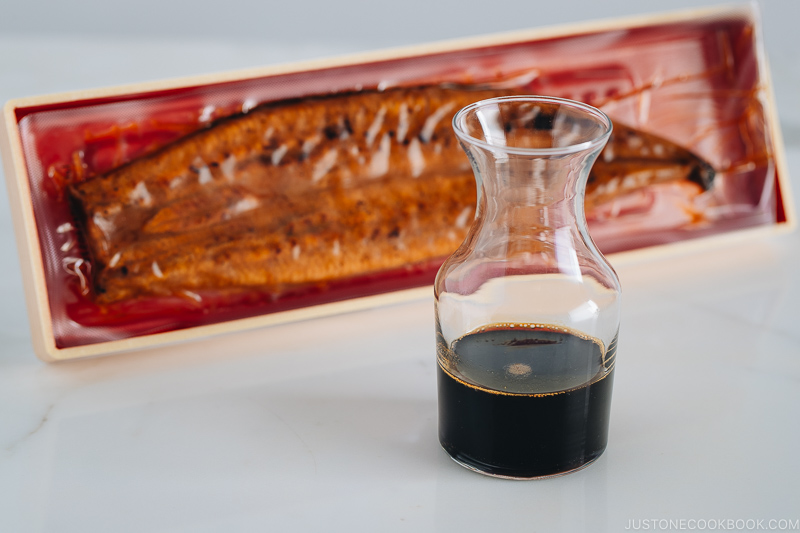
With just 4 ingredients, you can quickly whip up a sweet caramelized sauce to flavor the grilled eel. If I have any leftover unagi sauce, I’ll also use it to brush on my grilled rice balls to make Yaki Onigiri.
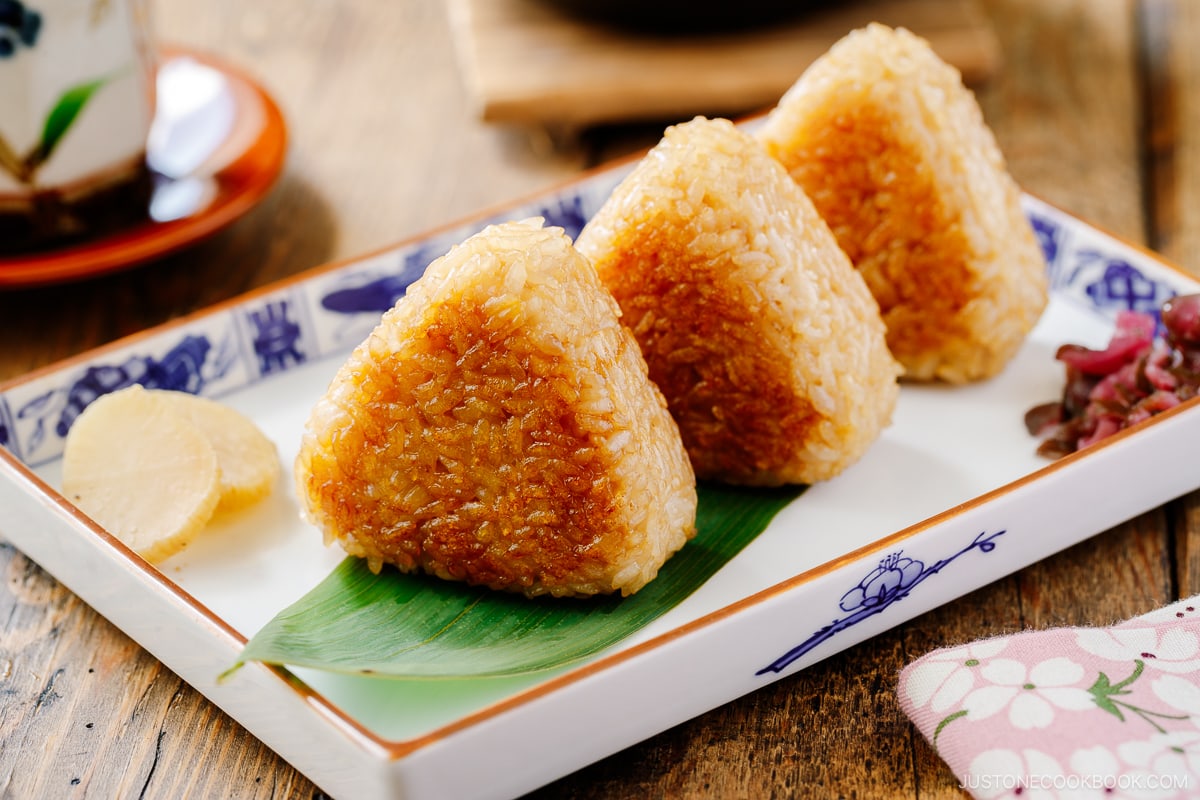
What to Serve With Unadon
You can serve it with miso soup, Japanese pickles, and small sides such as Spinach with Sesame Sauce or Kinpira Rekon.
Delicious unadon requires minimal effort to prepare, and it’s truly worth it to prepare this dish at home!
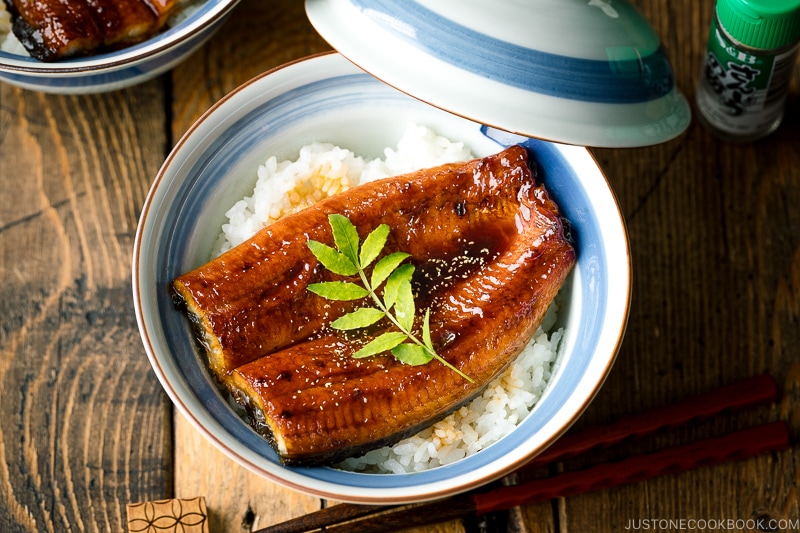
Wish to learn more about Japanese cooking? Sign up for our free newsletter to receive cooking tips & recipe updates! And stay in touch with me on Facebook, Pinterest, YouTube, and Instagram.
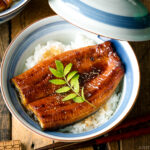
Unadon (Unagi Don)
Video
Ingredients
- 2 unagi (freshwater eel) fillets (one fillet is roughly 5.6 oz or 160 g; defrosted)
- cooking spray (or neutral-flavored oil, for broiling)
For the Unagi Sauce (double or triple the amount for extra sauce)
For Serving
- Japanese sansho pepper (optional)
Instructions
- Gather all the ingredients. Since the unagi sauce can keep for 3 months, I recommend making double or triple the amount for future unagi recipes or Yaki Onigiri.
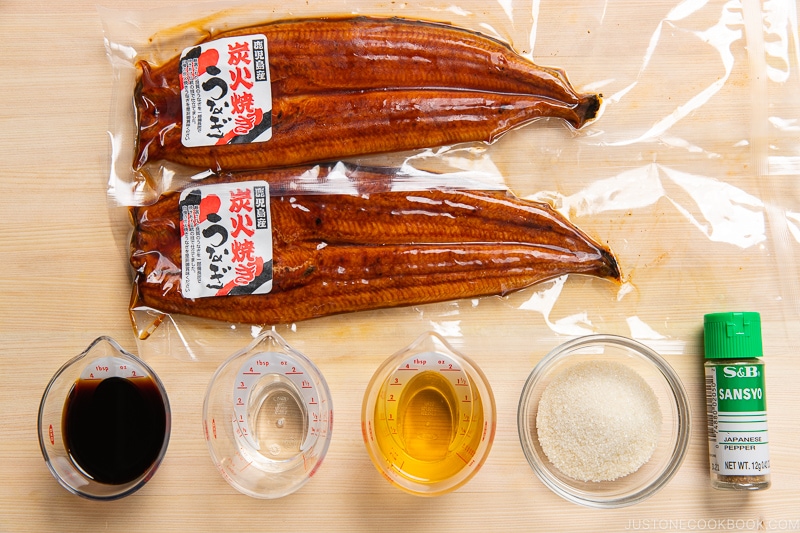
To Make the Unagi Sauce
- To a small saucepan, add ¼ cup mirin, 1½ Tbsp sake, and 2½ Tbsp sugar.
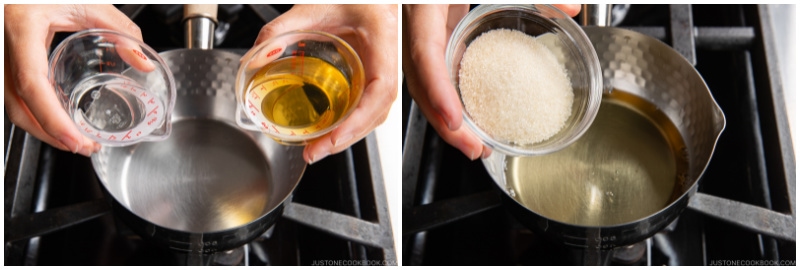
- Set the saucepan on the stove over medium heat and whisk the mixture together. Then, add ¼ cup soy sauce and bring the mixture to a boil.
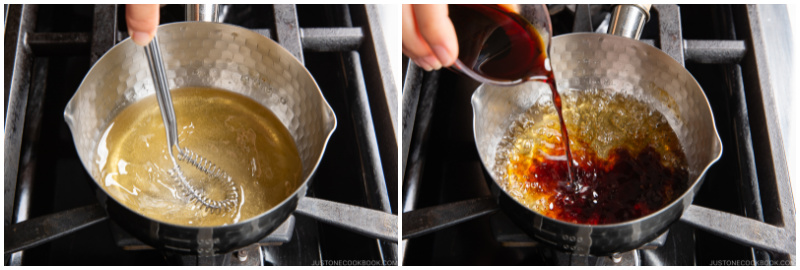
- Once boiling, reduce the heat to maintain a gentle simmer; you should see small bubbles around the edge of the pan. Continue simmering until the liquid is reduced to roughly one-third of the original amount, about 10-15 minutes. Tip: To check how much the sauce has reduced, dip the tip of a wooden chopstick into the liquid to mark the original amount; then, insert the chopstick again later to compare the sauce level against the original mark.
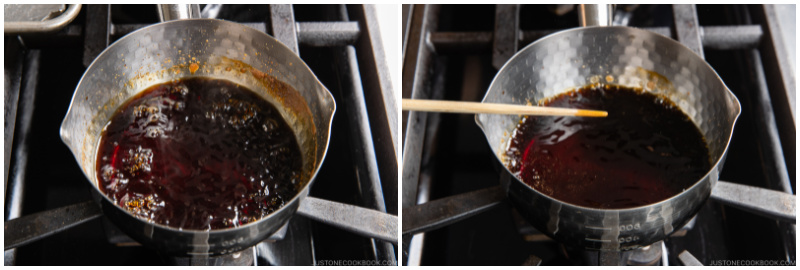
- Toward the end of cooking, the sauce will thicken and you will see more bubbles. Use the chopstick to confirm that the thickened sauce is one-third of the original amount. Then, remove it from the heat. As it cools, the sauce will thicken more. Tip: If you feel you've reduced it too much, add a bit of water to loosen up the sauce; you also can simmer it again a bit more to get the right consistency.
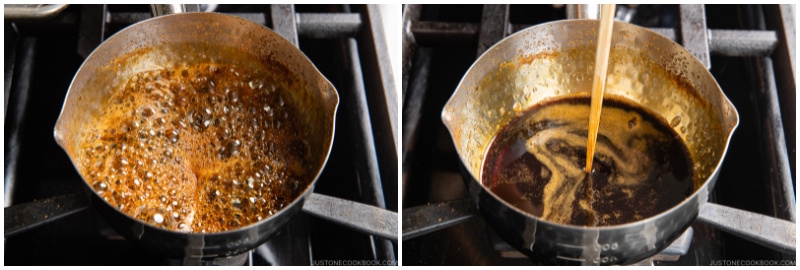
To Cut the Unagi
- Cut 2 unagi (freshwater eel) fillets in half or thirds to fit the size of your donburi serving bowl.
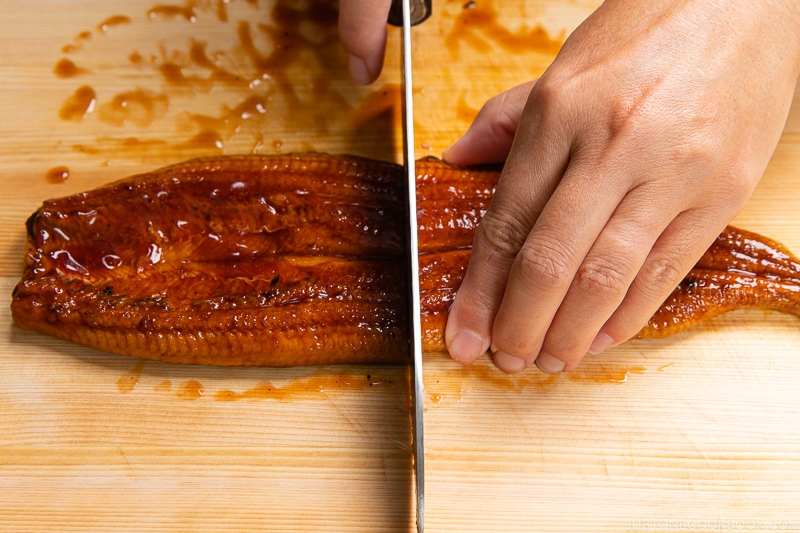
To Broil (recommended)
- Preheat the broiler* on High (550ºF/288ºC) for 5 minutes with a rack placed about 8 inches (20 cm) away from the top heating element (in the center of the oven). *The broiler settings are Low (450ºF/232ºC), Medium (500ºF/260ºC), and High (550ºF/288ºC). I usually broil on High (8 inches away) or Medium (6 inches away). When broiling, you don't control the temperature in the oven; instead, you control the distance between the broiler and the surface of the food. It's similar to using hotter and cooler zones on your grill.
- Line a baking sheet with foil for easy cleaning and brush or spray the oil onto the foil. Place the unagi pieces on the foil, skin side down. Broil the unagi until the surface is blistered a bit, about 5-7 minutes. Broil it on one side only; there's no need to flip it over.
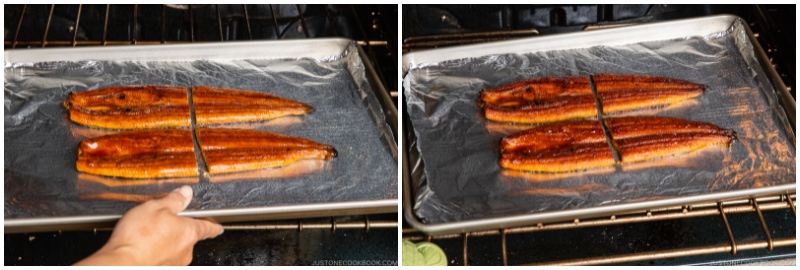
- Open the oven and brush the sauce on top of the unagi. Then, broil again for 30-60 seconds until you see the sauce bubbling on top.
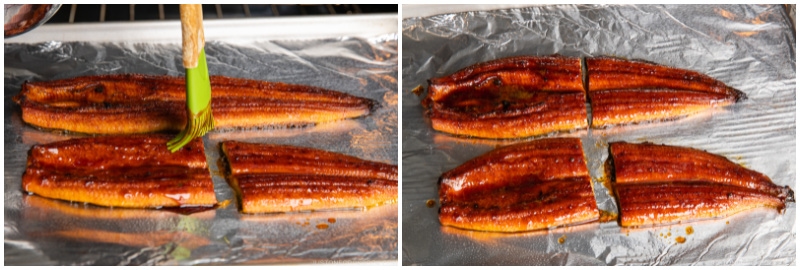
To Bake
- Preheat the oven to 425°F/218ºC with a rack placed in the middle position. Line a baking pan with parchment paper and place the unagi pieces on top. Bake until the surface is blistered a bit, about 10-12 minutes. Bake on one side only; no need to flip. Brush the sauce on top of the unagi. Then, bake again for 30-60 seconds until you see the sauce bubbling on top.
To Heat in a Pan
- Prepare two 16 inch x 16 inch (40 x 40 cm) sheets of aluminum foil. Thinly spread some cooking spray in the center of each sheet. Place two pieces of unagi on a sheet of greased foil. Bring the top and bottom foil edges together above the unagi. Fold and press the edges together a few times. Then, tightly close either side of the foil to form a sack. Repeat this process for the other unagi pieces. Add the foil pouches to the pan and reheat on low heat for 5-8 minutes. Tip: Your unagi won't blister or char if you use this method.
To Serve
- Serve the hot steamed rice in individual bowls. Then, pour or brush some of the unagi sauce on top of the rice.
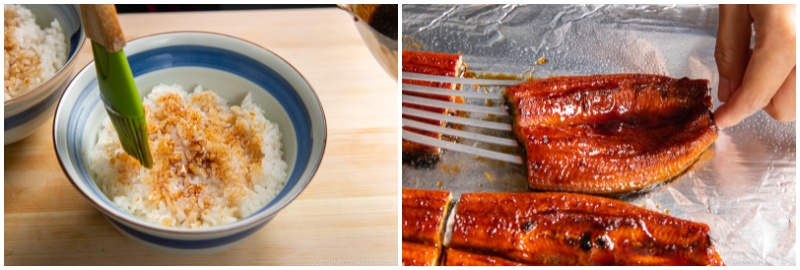
- Next, place one portion of the unagi on the rice in each bowl. Pour or brush more sauce on top of the unagi. Since I had a kinome (Japanese sansho pepper leaf), I placed it on top for garnish (optional). Serve immediately. You can also sprinkle ground Japanese sansho pepper on top (optional).
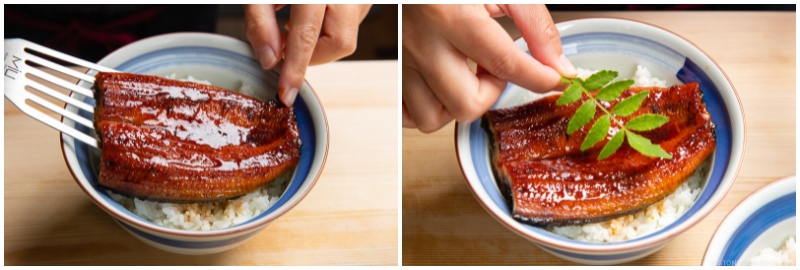
- To serve in a jubako (Japanese lacquered box), place a bed of hot rice in the box and brush some unagi sauce on top. For each serving, place 2 pieces of unagi (the entire fillet) on top, with the pieces overlapping each other and covering the rice. Brush more sauce on top of the unagi pieces and serve.
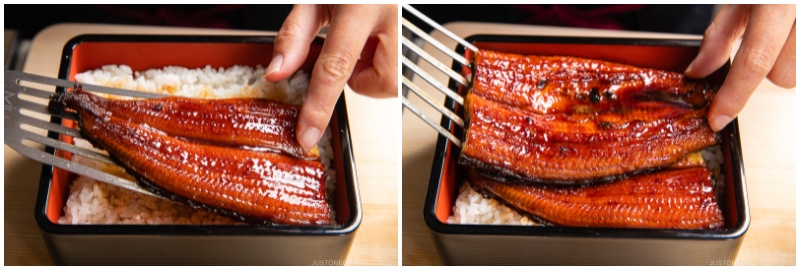
To Store
- You can keep the leftovers unagi in an airtight container and store it in the refrigerator for 3 days or in the freezer for 2 weeks. You can store any leftover sauce in an airtight jar and keep in the refrigerator for up to 3 months. You can use it to brush on grilled rice balls to make my favorite Yaki Onigiri.
Notes
Nutrition
Update: The post was originally published on May 31, 2012. It was updated with a revised recipe in July 2012. It was updated with new images and more helpful content on July 21, 2021, and republished on July 24, 2024.
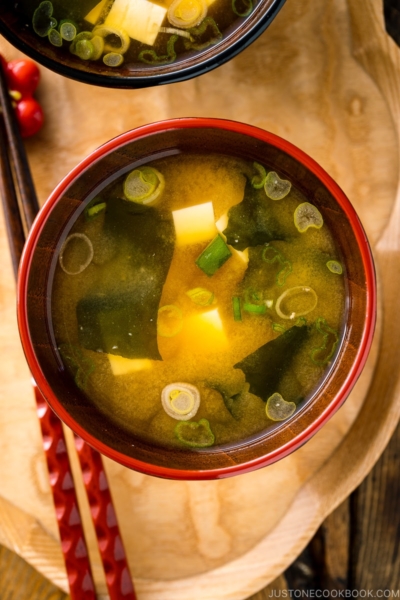
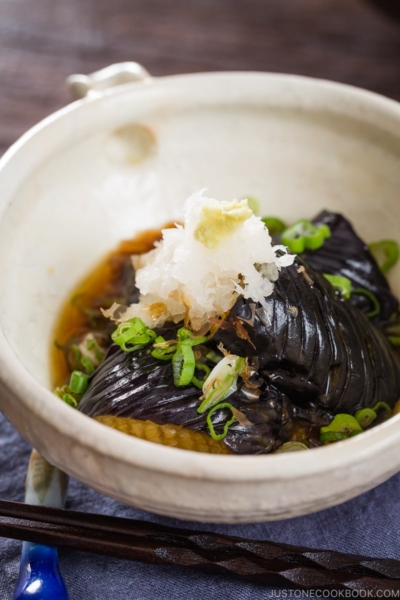
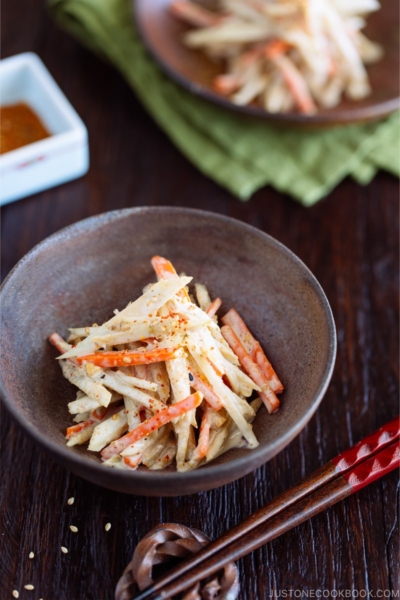
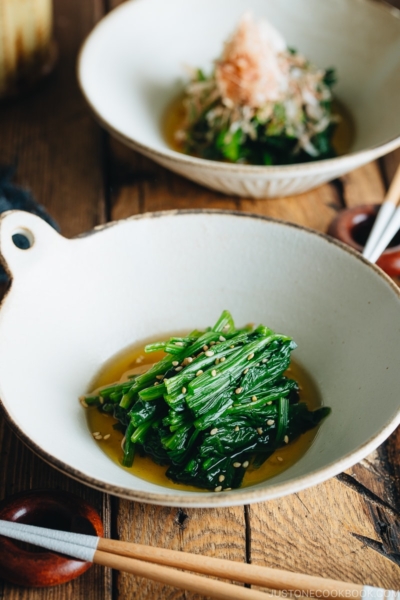




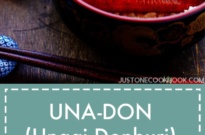
Thank you for another delicious and foolproof recipe! Just had the best unagi & plenty of sauce left over for another time. Really appreciate you sharing these wonderful recipes.
Hi Maria! I’m so happy to hear you enjoy this dish at home! It’s so easy, right? 🙂 Thank you for your kind feedback. xo
I used to eat unagi donburi. Unagi is actually my favorite! But I have stopped eating unagi because I heard they are being overfished, and soon there will not be enough unagi left in the waters. I eat other food instead. I heard there was a vegetarian dish like unagi – have you heard of it? I think it might be made from eggplant. I’ve seen photos and it looks good!
Take care,
Erin
Hi Erin! Yes that’s true. If you like catfish, I recommend this recipe instead too.
https://www.justonecookbook.com/catfish-kabayaki/
As an eggplant lover, I’d love the eggplant version too. though the texture won’t be the same…
I wish I could try this recipe…. Unfortunately I cannot. Not a single one of my local asian markets sell any vacuum sealed eel. :/ I am really sad. There is a Japanese restaurant near me that is the only one that I found that has unadon on their dinner menu, but for the price of 1 portion there, its not really worth it. I am so sad 🙁
Hi Blake! I’m so sad too! Just to double check, did you check the freezer section at the Asian grocery stores? If you cannot find them in refrigerator, I was thinking maybe not too many demand in your area… but they might possibly carry it as frozen. People make sushi roll with unagi (not raw) so there is a demand for sushi making… I hope you could find unagi one day…
Yeah I checked everywhere… I was so sad 🙁 even asked and they were like nope sorry
Sigh… I’m sorry you can’t find it. I like this Catfish Kabayaki as much as Unagi recipe.
https://www.justonecookbook.com/catfish-kabayaki/
Hope you enjoy!
Oh that looks yummy as well! Thank you for the link!
I love all of your recipes. I have tried several of them and they came out perfect. Thanks for sharing the recipes. I love Japanese food and I had been to Tokyo. I will revisit Japan again soon.
Hi Angel! Thank you for your kind words. I’m so happy to hear my recipes work out for you. I hope you get to visit Japan again soon! xo
You are absolutely correct! Unagi in sushi gets lost with the other ingredients. In this recipe, one can distinctly taste the unagi and could be appreciated more.
As of today, Mitsuwa still had unagi, 7.6 oz. at $3.99. And yes, this unagi is a product of China. The authentic Japanese unage was priced at $29.99 for the 300 gm pack. Honestly, I cannot afford the unagi at that price. I am pretty sure it’s also 100% tastier.
Hi Steve! I’m really happy you enjoyed making unagi at home, it’s a lot cheaper than eating unagi don at Japanese restaurant too! Thank you for your kind feedback. 🙂
Nami, I made this dish today as our main course dinner. The unagi’s were heated/grilled on both sides in the broiler and cut into 1-2 inches strips. I also made tamagoyaki (with sakura denbu) to go with the unagi. For the rice, I used sushi rice (black fox rice). Sauce was excellent and very flavorful. Everyone enjoyed their plate and I ran out of grilled unagi. [Mitsuwa had unagi, 7.6 oz. at $3.99, and I bought more than a few.]
In the past, I have included unagi in sushi rolls, but this the first time I topped unagi over rice. This was a winner in my family and I will make it more ofter. Arigato, arigato, arigato!!!
Hi Steve! Your dinner sounds very fancy and delicious! Glad to hear you liked the unagi sauce. 🙂
I actually like Unadon better than unagi in sushi roll as it’s easier for me to prepare (haha) and we can enjoy the unagi flavor more.
Thank you again for your kind feedback!
Hi Nami,
My kids love unadon. We just visited Tokyo and have the best unadon and unagi on the skewer at Tsujiki. The frozen unagi I found at the local Asian markets are all Chinese import and they taste spongy to me. Is there still Japanese import unagi to US? Thanks!
Hi Alice! I totally agree. I can’t eat those unagi and they are incredibly cheap. Japanese grocery stores sell imported unagi, and one fillet costs at least $25-30. But that’s similar cost if you would eat Unadon in Japan… Japan’s domestic unagi has really good texture, no rubbery or spongy at all. Hope your local grocery stores import unagi. 🙂
This sauce is delicious! So tasty over rice with the eel.
Hi Rose! So happy to hear that. Thank you for your kind feedback!
I love all your Japanese published recipe. It is easy to follow and delicious!
Hi Audrey! Thank you so much for your kind words!
I loveeeee unagi!! Like you, I grew up eating eel and I love it! Thanks for the recipe!
Hi Levina! It’s too bad it’s getting expensive. It’s so hard to find domestic unagi these days. The unagi texture is very different from Japanese unagi and unagi from other countries. 🙂
Hello Nami, this looks absolutely fabulous! I have a few questions just to make sure before I do it wrong:
The broiler function in my big convection oven seems to only go up to 250°C. Will this be enough? Should I broil it longer, or on a higher rack?
Hi Tobias! Thank you for your kind words. 🙂 250C (482F). American broiler is usually between 500-550F (260-288C). So your oven is a bit low in temp. But don’t worry, you will need a bit longer to make the unagi bubbly on top. Nothing is wrong with it. Cooking for a long time might dry the fish, but in this case, the cooking time shouldn’t be too different. 🙂 I’m not sure of your oven size, so keep it 6 inches (15 cm) away from the broiler. You don’t want to get char while the unagi is still cold. Hope you enjoy!
Nami, thank you so much for your detailed answer! Looks like my dream of a home-made Unagi Don can come true after all, haha. (I love Unagi Nigiri so much, but they are so… small. This looks like heaven.)
You’re very welcome! Enjoy! 🙂
I charred the Unagi a good bit because I put it too close (I had to choose between 12 and 18 cm and I clearly chose wrong) and didn’t watch the oven, but it was delicious nonetheless! And now I can’t wait to try other recipes from your page. All of it looks so good….
Thanks a lot for all the work you put into this!
Do you use Cooking Sake or Regular Drinking Sake we buy at liquor stores?
Thanks!
Hi Jackie! I buy regular drinking sake (cheap one) at Japanese grocery stores or Asian grocery stores. If they have a liquor license they carry “real” drinking sake. If not, you might only see cooking sake.
Here’s what I use: https://www.justonecookbook.com/pantry_items/sake/
Hi Nami,
Thank You for great recipes, I love trying them at home.
Just wondering when you said sake in your recipes, do you mean cooking sake or sake like drinking sake?
Hi Grace! Thank you for reading my blog and trying my recipes! I use inexpensive drinking sake for cooking. Cooking sake has other seasonings in it which I don’t need in my food. 🙂
Here are sake brands I use (I pick depends on which one is on sale):
https://www.justonecookbook.com/pantry_items/sake/
Hi Nami,
I live in indonesia and it’s hard to get drinking sake in here as alcohol drinks here are not easily attainable, is it still ok to substitute with cooking sake? As I see most of ur recipes uses sake instead of cooking sake.
Sure that’s okay! 🙂 Hope you enjoy cooking Japanese foods!
Hi ! this is a great help for me ! I found frozen Unagi in an Asian store and will try your recipe. Just wondering if I have to defrost or not before putting in the oven. Thanks for your reply 😀
Hi Sylvia! If you reheat at lower temp for a longer time, you can put into the oven while frozen, but I usually defrost first and cook (according to my recipe above). 🙂
Oh ! Domo arigato Namikochan ! 😀 I will defrost then slowly while preheating.
I found a Uo Kichi (China) better than nothing. It tasted good the first time I ate but didn’t know how to prepare and therefore it was chewy ! I’ll will update with the result. It’s for Saturday 😀
I did it ! Just like you wrote ! it was divine ! “Hontoni oichikata” Thank you !
Hi Sylvia! Thank you for your kind feedback! I’m so happy you enjoyed this dish! 🙂
Hi, I bought vacuum-packed unagi at Nijiya. However, there were many little bones. Normally when I eat unagi at a restaurant, there aren’t bones. I can’t read Japanese — is there a way to tell if there are bones are not?
There were 2 types of unagi at Nijiya. One was very expensive. I bought the cheaper one. Maybe if I had bought the expensive one, it wouldn’t have had bones.
I think, the one you got is from China? The quality is very poor. 🙁 The other one is on a tray and plastic wrap covered. I think it was from Kagoshima, but it costs close to $28 or something like that (but it tastes much better than vacuumed packed). I only buy these really on a special occasion… They used to have the packaged one from Kagoshima that I showed in the post, but they don’t carry it anymore.